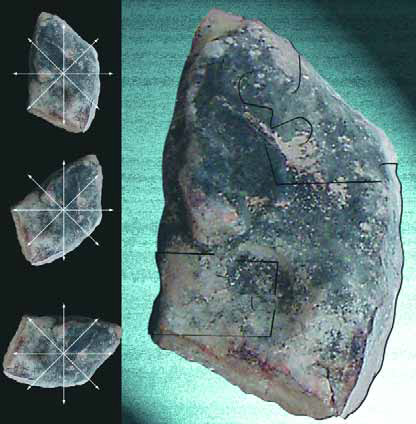construction
One of the great things about working with different architects and designers the way we do is that, as builders of pools, spas and other watershapes, we enjoy opportunities to work across a broad range of design styles and sensibilities. In this instance, we're focusing on one of our favorite Southern California architects, Mark Singer. He's known regionally for crisp, clean, minimalist designs and is well regarded for his work on breathtaking lots along the coast in Laguna Beach, Newport Beach and other well-heeled cities overlooking the Pacific Ocean. To our good fortune, most of his projects include pools, spas, courtyard waterfeatures, outdoor sculptures and other amenities that enhance and extend his contemporary designs. Our most recent project with Singer was completed in the summer of 2004 at an older home in the beautiful beach community of Corona del Mar. The house itself was not originally designed by Singer, but it had been remodeled by him several times in the years since. In fact, so much has been done at this point that it's practically impossible to distinguish this residence from projects he has pursued from the ground up. COMPLETING A SCENE The homeowner is a wealthy land developer, a self-made man and a major fan of
When you execute complex projects for sophisticated clients, your ability to satisfy them and their tastes by bringing something different or interesting or unique to the table can make all the difference. As our firm has evolved, we've increasingly come to focus on identifying these compelling touches, which for us most often center on old-world influences that resonate, sometimes deeply, with our clients. I've always loved to travel and have spent extended periods in Asia, Latin America and Europe. At some point, it occurred to me that by working not only with the principles of classical European and Asian garden design, but also with authentic, imported materials and art objects, the work would take on greater meaning and interest for me - and for my clients as well. To that point, our firm had followed a path of influence that still reflects itself in our replication of ancient stone-setting techniques. While traveling in China and Japan, I began spotting stone pieces and other objects we could use directly in our watershapes and gardens and started acquiring pieces for that purpose. This step beyond evoking not only the style but actually using elements of authentic design quickly turned into a powerful element in our work. As we moved further in this direction, the channels opened wider, the creative possibilities blossomed and we soon began incorporating more and more of the materials and ideas that I'd encountered
To me, setting natural stone has always seemed something like assembling a very large jigsaw puzzle: All the pieces have to fit together, and there's definitely a right way and a wrong way to make it happen. I start the process systematically by laying stones out in an adequately large area and then just looking at them. As I go, I visualize how each will work as part of the overall composition and identify stones with either convex or concave contours that might fit together in some visual way. I'm constantly asking myself, "If I put this stone here and this other one right next to it, how will it work? Should I pick another stone and use a different combination?" Nature helps me in coming up with the answers, because
Serenity, comfort, repose. Delight in harmony with nature. These were the guiding principles behind The Point, one of 114 elegant homes gracing the 145-acre Hybernia development on the western boundary of Highland Park, a celebrated Chicago suburb located about 25 miles from downtown on a stretch of Lake Michigan known as the city's North Shore. We were initially called to Hybernia by a true visionary, David Hoffman, president of Red Seal Homes, the prime contractor for the development. He told us how his firm had struggled for years to acquire the parcels included in the development and wanted us to see that he was sensitive and attuned to the special nature of the setting and the history of its community. His first request: a design for a building that would house a pool and hydrotherapy spa for two of his most discriminating clients as a safe, secluded, calming harbor from their heavy international business travels. As it turned out, however, this was just the beginning of what would
There's something in human nature that loves the unexpected. From pulling open gifts wrapped in paper, ribbons and bows to the thrill of rounding a forest trail to come upon a waterfall, the sense of anticipation and discovery adds spice to life and generally keeps things interesting. As designers of watershapes and landscapes, we have a tremendous opportunityto use the excitement that comes along with the process of progressively experiencing an environment. And the nice thing about setting up spaces that unfold as you move through them is that they can be organized around simple elements, from free-standing walls, steps or hedges to trees, fences and just about anything else thatpartially blocks, disrupts or interrupts a view. This project, which was first covered in "Details" in the December 2004 issue, is a perfect example of using a sense of
Watershaping advanced by leaps and bounds from 1999 through 2004 – a journey of artistry…
Watershaping advanced by leaps and bounds from 1999 through 2004 – a journey of artistry…
Watershaping advanced by leaps and bounds from 1999 through 2004 – a journey of artistry…
Watershaping advanced by leaps and bounds from 1999 through 2004 – a journey of artistry…






















